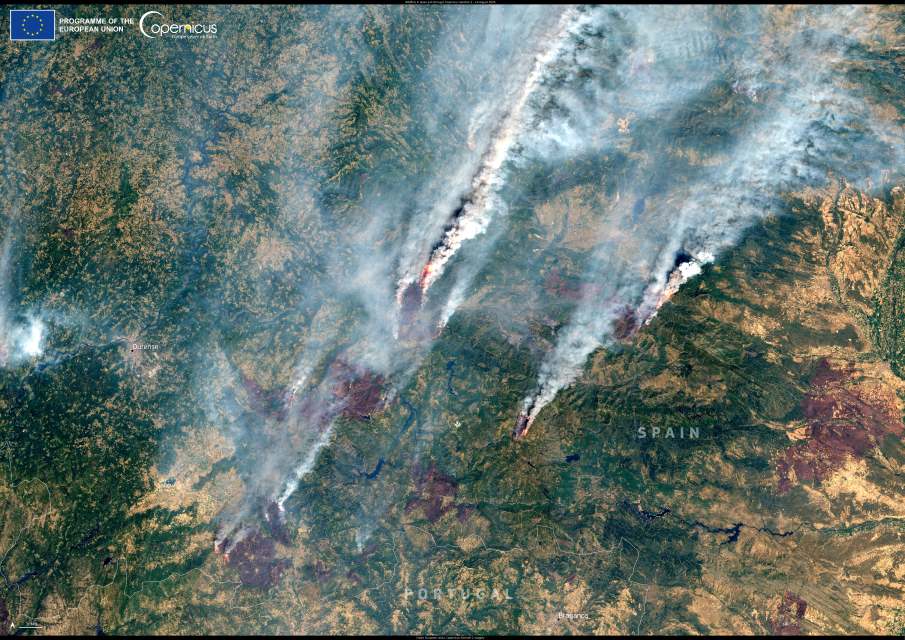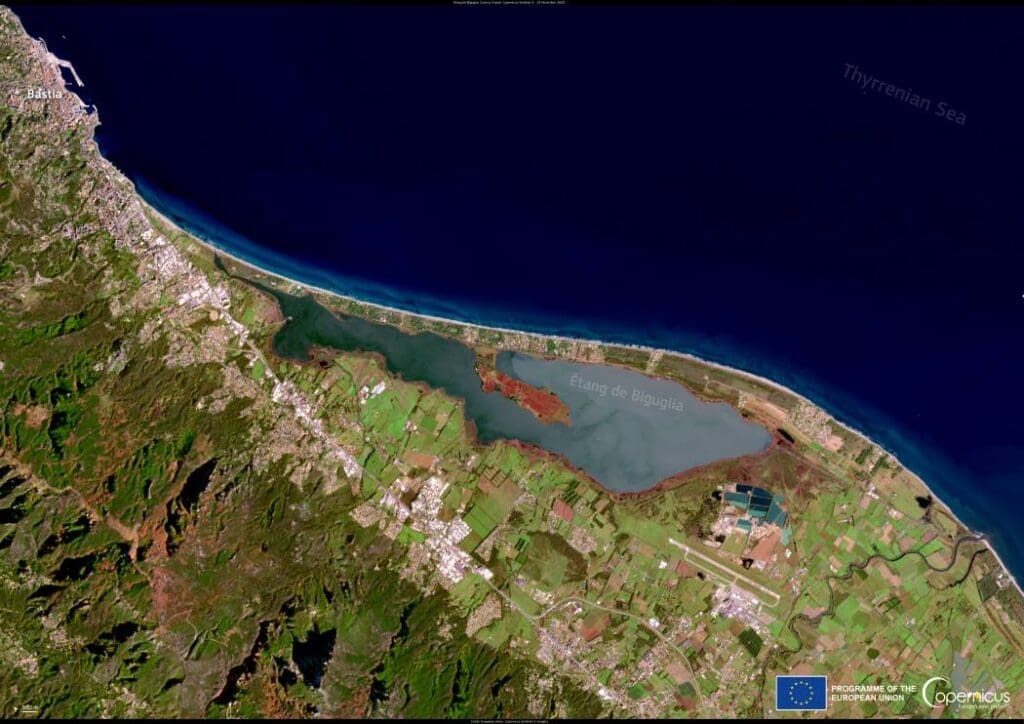Massive wildfires have swept across Spain and Portugal, forcing evacuations and claiming lives as the Iberian Peninsula endures another extreme summer of heat and drought. By 17 August 2025, Spain had already registered its highest annual fire emissions in the 23-year Copernicus Atmosphere Monitoring Service (CAMS) dataset, marking a grim milestone for the country.
This Copernicus Sentinel-2 image, acquired on 16 August, shows dense smoke plumes rising from multiple fires near the city of Ourense in Galicia, northwestern Spain. The image captures one of the hardest-hit regions, where firefighters have been struggling to contain the flames as strong winds and high temperatures fuel the spread.

Portugal has also been severely affected, particularly in the northern and central regions. According to CAMS data, the country’s emissions have nearly reached the record annual totals of 2003 and 2005. To aid response efforts, the Copernicus Emergency Management Service (CEMS) has been activated to provide rapid mapping support for national authorities.
On the ground, Spain has deployed 1,900 troops to assist firefighters, after sending an additional 500 reinforcements. The death toll has risen to four, including a firefighter who died when his truck fell down a steep hill in Castile and León. Prime Minister Pedro Sánchez expressed “sadness” and “desolation” at the news. In Portugal, another firefighter was killed in a traffic accident while responding to the blazes, President Marcelo Rebelo de Sousa confirmed.
The intensity of the fires has escalated rapidly. Until mid-August, emissions were close to seasonal averages, but within a week they surged to unprecedented levels in the CAMS record. Elsewhere in southern Europe, fires have also broken out in Greece, France, Turkey and the Balkans, as the region continues to face searing heatwave conditions.
Featured image credit: European Union, Copernicus Sentinel-2 imagery



